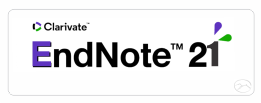Activity of NGOs as a constituent element of policy in the field of combating crime
Publicado 2022-10-18
Palabras clave
- criminological activity, non-governmental organizations, public organizations, public policy, State policy.
Cómo citar
Resumen
The purpose of the article is to study the activities of non-governmental organizations as a constituent element of the policy in the area of combating crime. The methodology for the article consists of a system of the following methods: hermeneutics, scientific analysis, deduction and induction, systematic, categorical and etymological analysis, logical and semantic, formal and logical. Research results. The authors are convinced that criminological policy as a sub-system of policy in the area of fighting crime directly depends on the effectiveness and stability of the mechanism of implementation of criminological activities of non-governmental organizations. At the same time, according to the authors, it is necessary to clearly distinguish between “public policy” and “State policy” precisely at the expense of subject composition. Taking into account this criterion, public policy is broader than State policy. Practical implementation. It has been proven that when talking about the criminological activity of non-governmental organizations, it is appropriate to use the concept of public policy, because it is within its framework that the criminological activity of non-governmental organizations can be conducted. Value/originality. In the future, a promising direction of scientific research is the study of information and analytical support and scientific support of criminological activities of non-governmental organizations.
Descargas
Citas
Bruinsma, G., & Weisburd, D. (2014). Encyclopedia of criminology and criminal justice. New York: SpringerReference. https://hostnezt.com/cssfiles/Criminology/Encyclopedia%20of%20Criminology%
20and%20Criminal%20Justice%202014%20By%20Gerben%20Bruinsma%20&%20David%20Weisburd.pdf
Demianchuk, O.P. (2000). “State policy” and “public policy”: a variant of the transition period”. Scientific Notes, Series: Political Sciences, 18, pp. 31–36. http://ekmair.ukma.edu.ua/bitstream/handle/123456789/9715/Demyanchyk_Derzhavna_polityka.pdf?sequence=1&isAllowed=y
Fris, P. L. (2016). “Politics in the field of fighting crime is an illusion of existence // In the collection “Policy in the field of combating crime” of the International Scientific and Practical Conference (pp. 110 – 115). Ivano-Frankivsk, Ukraine. http://lib.pnu.edu.ua/files/konferensions/conf-zlo.pdf
Hornyk V.G., & Kravchenko S.O. (2018). Politics in public administration: lecture notes. Kyiv: Tavri National University named after V.I. Vernadsky. https://tnu.edu.ua/sites/default/files/normativbasa/pplek.pdf
Jones, T., & Newburn, T. (2005). “Comparative Criminal Justice Policy-Making in the United States and the United Kingdom: The Case of Private Prisons”. The British Journal of Criminology, 45(1), pp. 58–80. https://papers.ssrn.com/sol3/papers.cfm?abstract_id=905409
Joutsen, M. (2017). “What is the role of the public in crime prevention and criminal justice? The debate in the United Nations”. In: Resource material series, 105, pp. 49-69. https://www.unafei.or.jp/publications/pdf/RS_No105/No105_9_VE_Joutsen_2.pdf
Khoma, N. M. (2015). Modern political vocabulary: encyclopedic dictionary-reference. Lviv: “Novyi Svit-2000”. https://bit.ly/3DqxCAZ
Kovbasiuk, Yu., Vashchenko, K.O., & Surmin, Yu.P. (2014). State policy: a textbook. Kyiv: NADU. https://ktpu.kpi.ua/wp-content/uploads/2014/02/DERZHAVNA-POLITIKA.pdf
Kozych, I.V. (2018). “Functional correlation of criminal law and criminological policy in the field of fighting crime”. Actual problems of improving the current legislation of Ukraine: a collection of scientific articles, Issue 48, pp. 126–134. http://nbuv.gov.ua/UJRN/apvchzu_2018_48_15
Kozych, I.V. (2020). “Functional interaction of crime policy subsystems”. Scientific Law Journal, 10, pp. 248–253. http://legalnovels.in.ua/journal/10_2020/10_2020.pdf#page=248
Krevsun, O.M. (2017). “The fight against crime – priority component of National Policy of Ukraine”. Bulletin of the Penitentiary Association of Ukraine, 1, pp. 32–38. https://webcache.googleusercontent.com/search?q=cache:Z5-FosaU_UAJ:https://visnykpau.com/index.php/journal/article/download/34/8/&cd=2&hl=uk&ct=clnk&gl=ua
Lavruk, O.V. (2018). “The essence of the concept of State policy”. University scientific notes, 67–68, pp. 254–263. http://old.univer.km.ua/visnyk/1803.pdf
Law of Ukraine No. 2411-VI. On the Principles of Domestic and Foreign Policy. Official Web site of the Verkhovna Rada of Ukraine, July 01, 2021. Available online. In: https://zakon.rada.gov.ua/laws/show/2411-17#Text
Law of Ukraine No. 254k/96-VR (1996). Constitution of Ukraine. Official Web site of the Verkhovna Rada of Ukraine, June 28, 1996. Available online. In: https://zakon.rada.gov.ua/laws/show/254%D0%BA/96-%D0%B2%D1%80#Text
Matkarimova, J. (2021). “Interpretation of the concept of non-governmental organization in international legal documents”. German International Journal of Modern Science, 11, pp. 40–42. https://cyberleninka.ru/article/n/interpretation-of-the-concept-of-non-governmental-organization-in-international-legal-documents
Moody, C. E., & Marvell, T. B. (2008). “Can and Should Criminology Research Influence Policy? Suggestions from Time-Series Cross-Section Studies”. In: Criminology & Public Policy, 7(3), pp. 359–365. https://www.academia.edu/14967990/CAN_AND_SHOULD_CRIMINOLOGY_
RESEARCH_INFLUENCE_POLICY_SUGGESTIONS_FOR_TIME-SERIES_CROSS-SECTION_STUDIES_
Nedilko, A.I., Zadorozhnyi, V. P., & Boiko, V.V. (2018). Public policy: a study guide. Poltava: PoltNTU. http://reposit.nupp.edu.ua/bitstream/PoltNTU/8518/1/%D0%9D%D0%B0%D0%B2%
D1%87%20%D0%BF%D0%BE%D1%81%D1%96%D0%B1%20%D0%9F%D0%9F%D0%
BE%D1%81%D1%82.pdf
Palahnyuk, Yu.V. (2012). “State policy” and “public policy”: theoretical aspect”. In: Scientific works, Series: Governance, 181(169), pp. 63–67. https://www.researchgate.net/publication/338951879_DERZAVNA_POLITIKA_TA_
PUBLICNA_POLITIKA_TEORETICNIJ_ASPEKT
Pukhkal, O. H., & Homoliako, O. V. (2017). “Public and State policy: unity and differences”. In: Investments: practice and experience, Series “Public Management”, 24, pp. 106–112. http://www.investplan.com.ua/pdf/24_2017/20.pdf
Rufanova, V., Shablystyi, V., Spilnyk, S., Sydorenko, N., & Mozol, S. (2022). Conflict-related sexual violence as a threat to peace and security of the world. Amazonia Investiga, 11(53), pp. 220-226. https://doi.org/10.34069/AI/2022.53.05.22.
Sadkovyi, V. P., Dombrovska, S. M., Lopatchenko, I. M., & Antonov, A.V. (2019). State policy: analysis and mechanisms of implementation: lecture notes. Kharkiv: NUZZU.
Shablystyi, V., & Prymachenko, V. (2019). “Results of sociological study of economic factors of effectiveness of victimological prevention of security of living environment”. Baltic Journal of Economic Studies, 5(5), pp. 204-212. https://doi.org/10.30525/2256-0742/2019-5-5-204-212.
Tertychka, V. (2002). State policy: analysis and implementation in Ukraine. Kyiv: Publishing House by Solomia Pavlychko “Osnovy”. https://docs.google.com/viewer?url=https%3A%2F%2Fshron1.chtyvo.org.ua%2FTertychka_Valerii%2FDerzhavna_
polityka_analiz_ta_zdiisnennia_v_Ukraini.pdf
Tomakhiv, V. (2018). Political science: study guide. Ternopil: TNEU. http://dspace.wunu.edu.ua/bitstream/316497/33282/1/%D0%A2%D0%BE%D0%BC%
D0%B0%D1%85%D1%96%D0%B2%20%D0%BF%D0%BE%D1%81%D1%96%D0%B1%
D0%BD%D0%B8%D0%BA.PDF
Vasylevych, V. (2020). Criminological policy of Ukraine: monograph. Kyiv: National Academy of Internal Affairs.
Vlasov, V. H. (2015). Content and mechanism of the foreign policy of the modern State. In: International Relations, Part “Political Sciences”, 8, pp. 1-14. http://journals.iir.kiev.ua/index.php/pol_n/article/view/2570/2279
Yaziji, M., & Doh, J. (2009). Classifying NGOs: Definitions, typologies and networks / NGOs and Corporations: Conflict and Collaboration (Business, Value Creation, and Society). Cambridge: Cambridge University Press, pp. 3–14. https://assets.cambridge.org/97805218/66842/excerpt/9780521866842_excerpt.pdf
Zhadko, V. A., & Voitov, V. V. (2010). Political Dictionary: educational and methodical manual for students. Zaporizhzhia: ZDMU. https://bit.ly/3N2f65b











